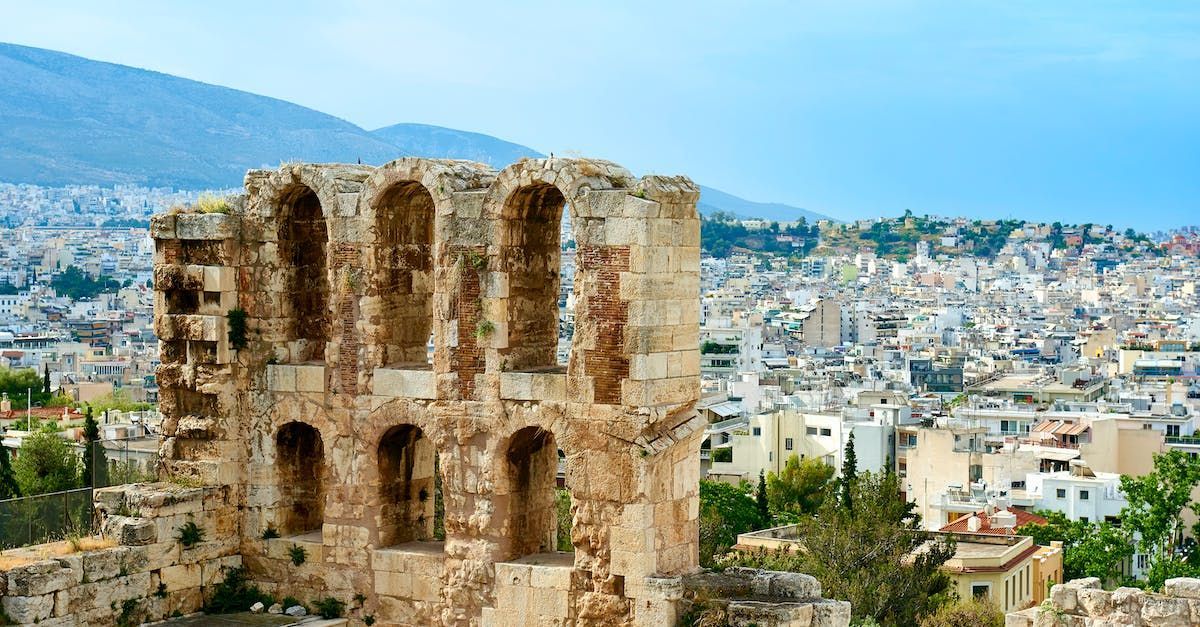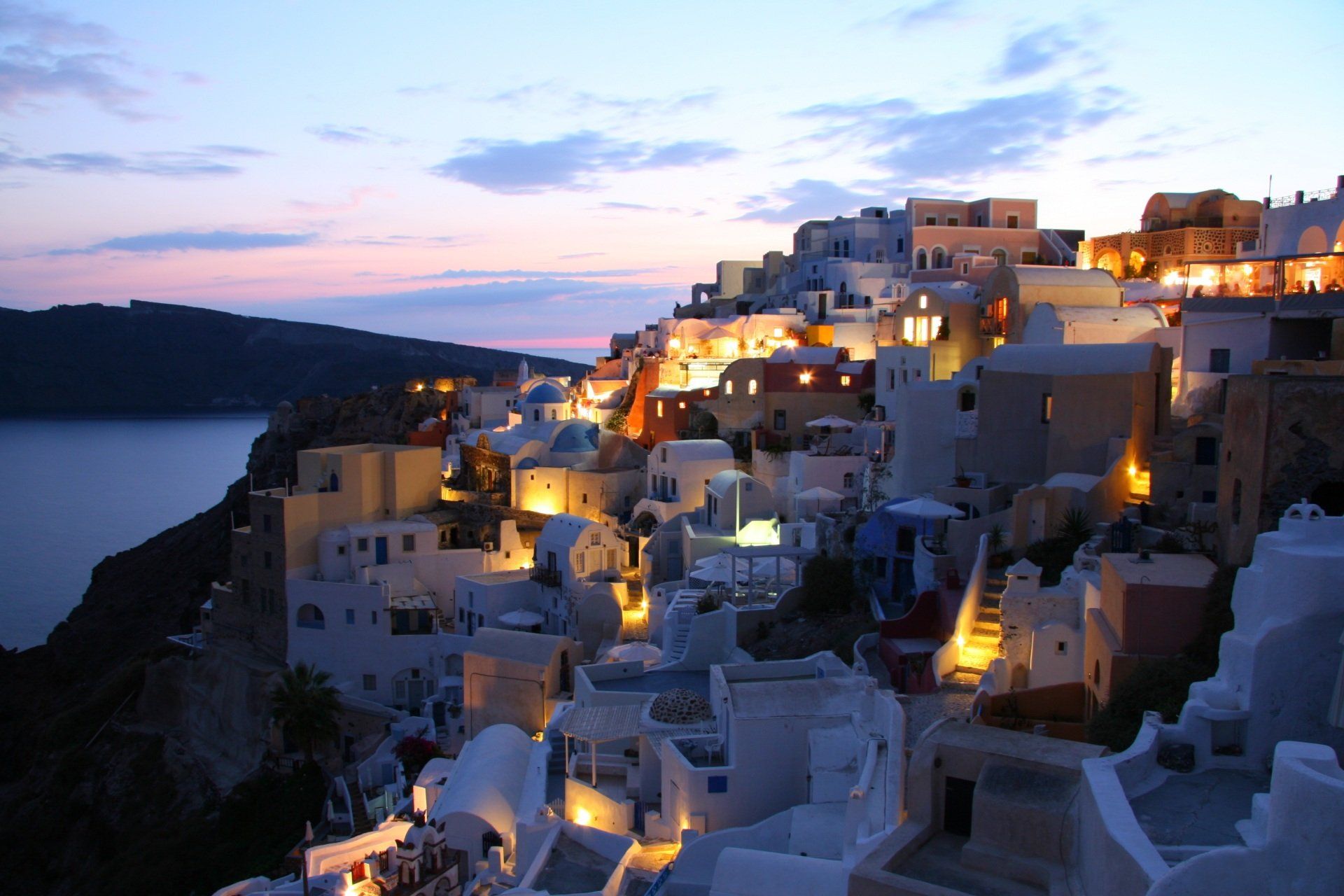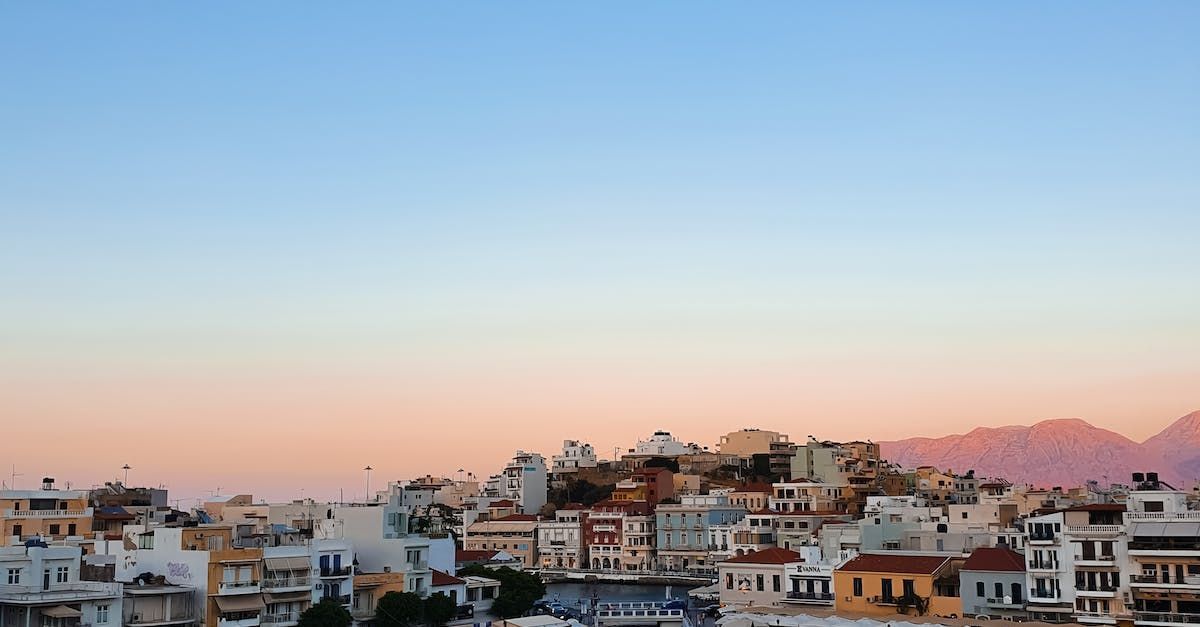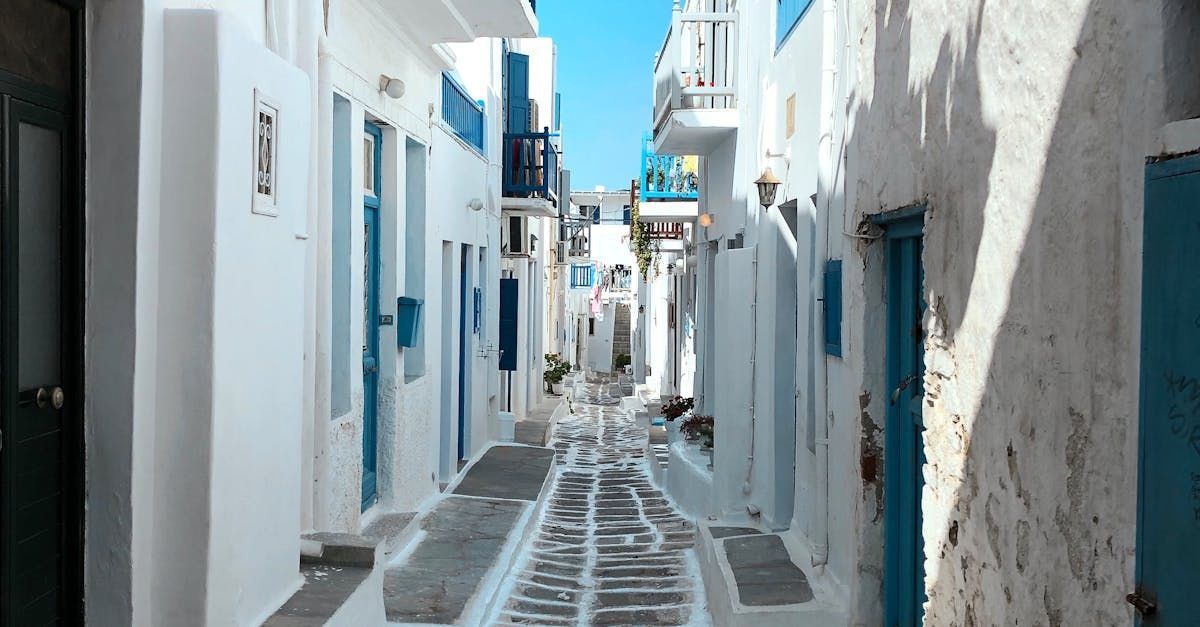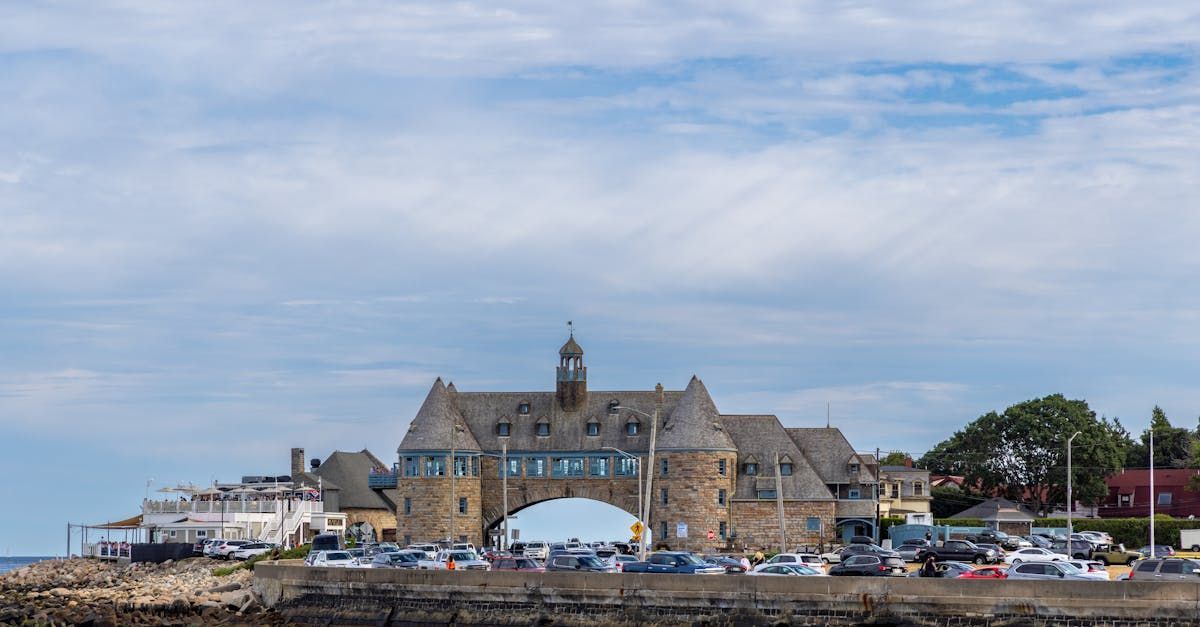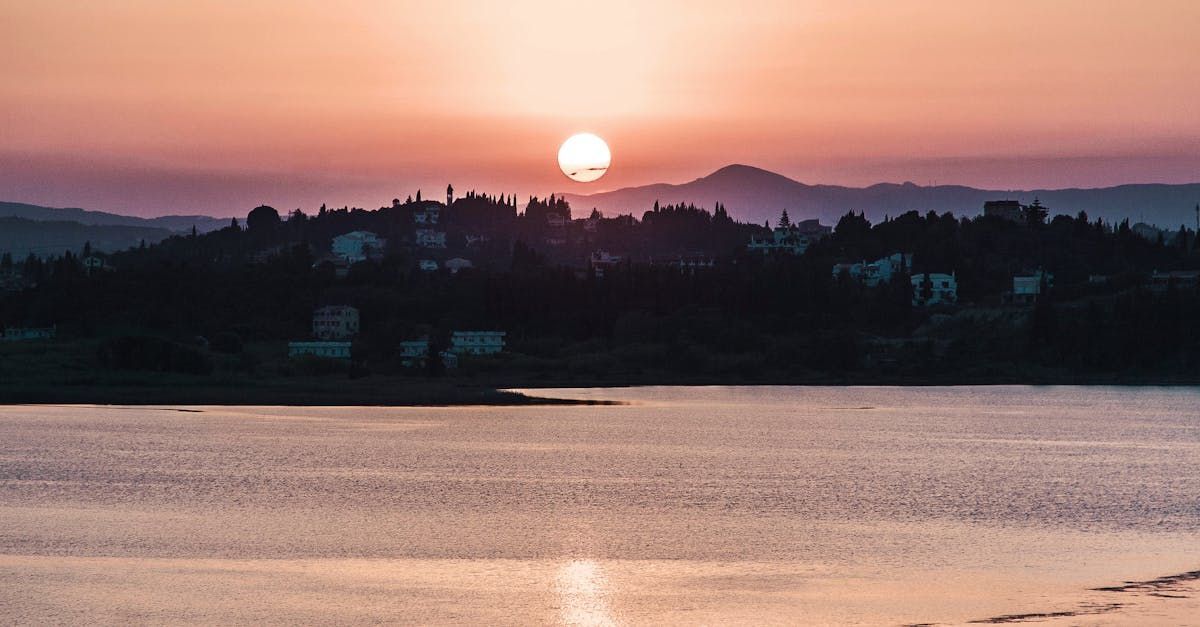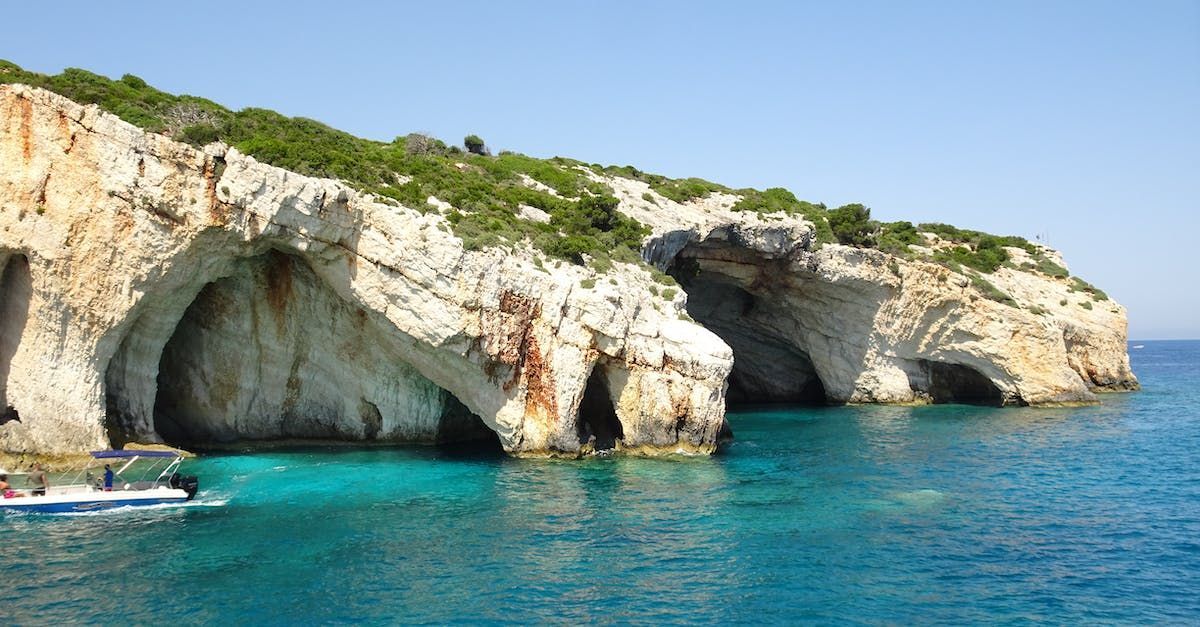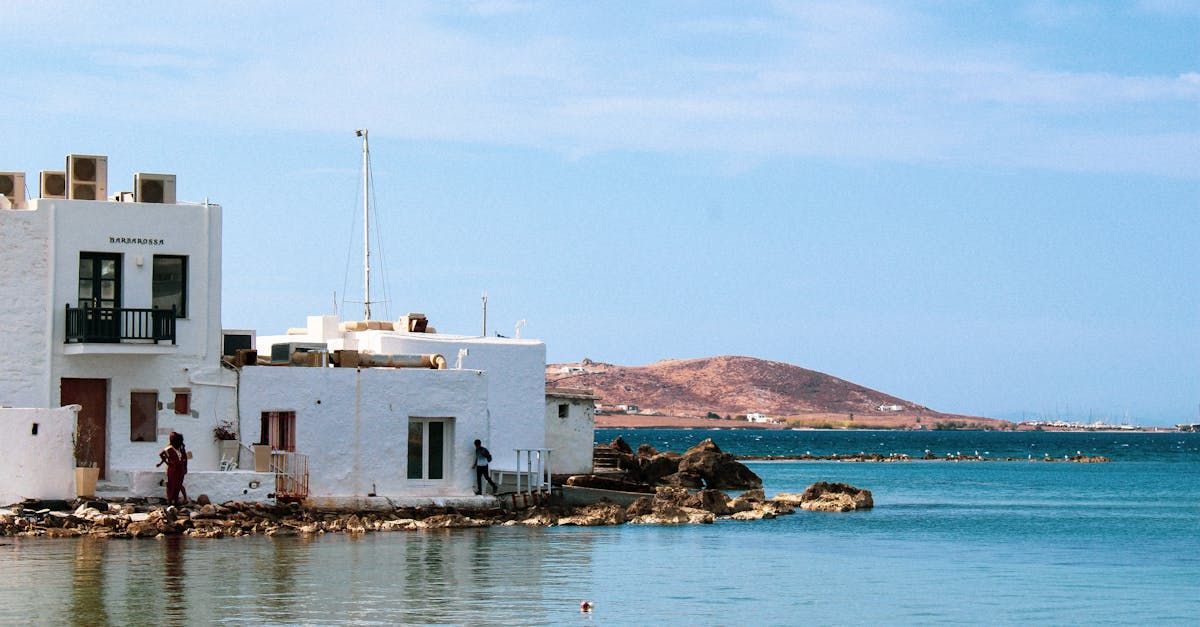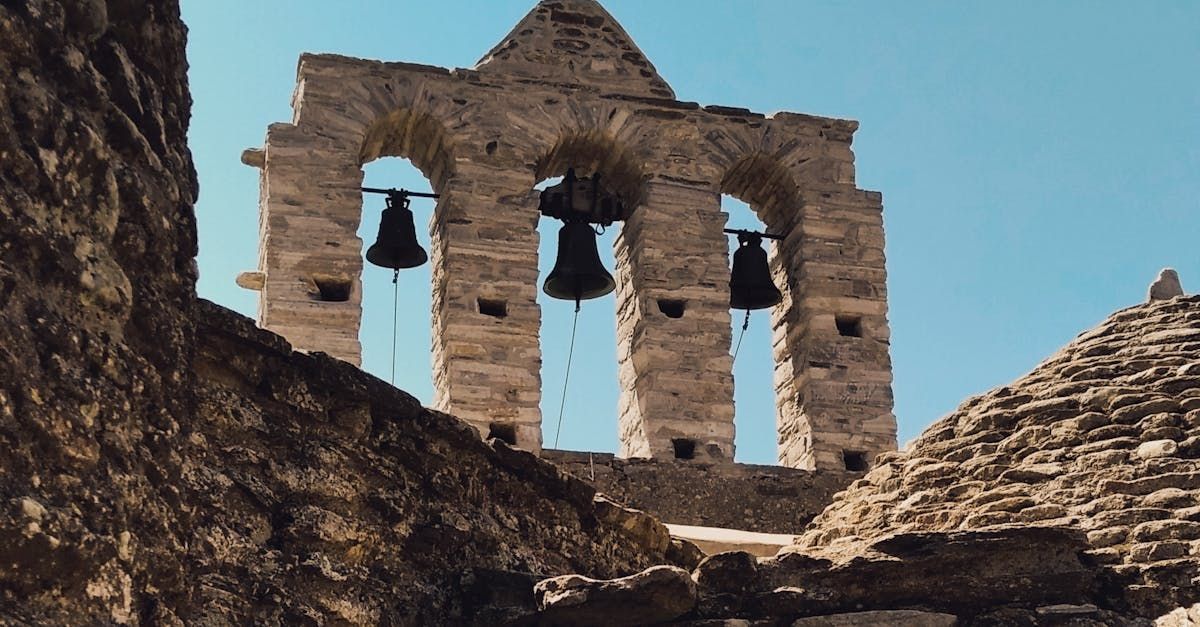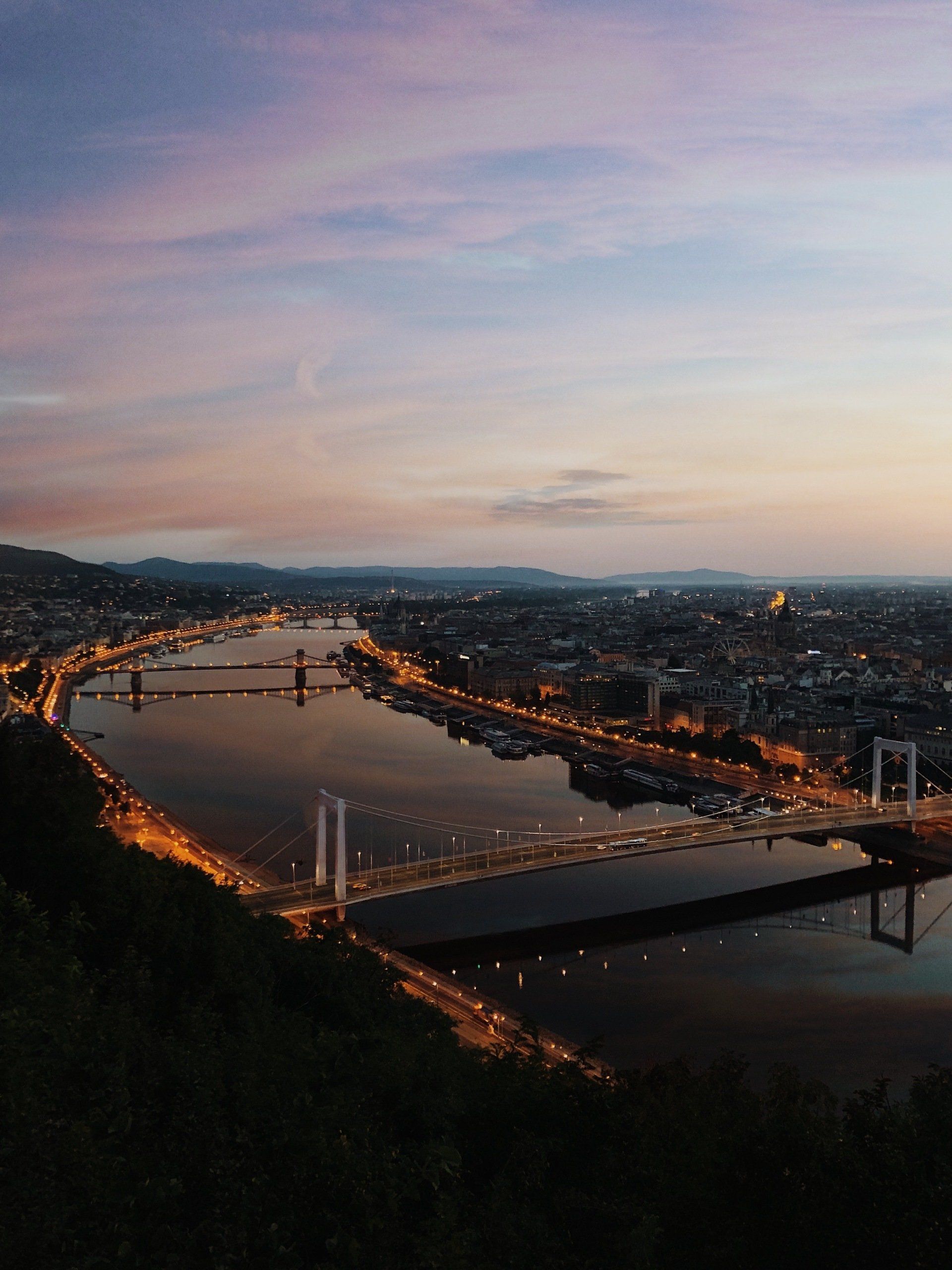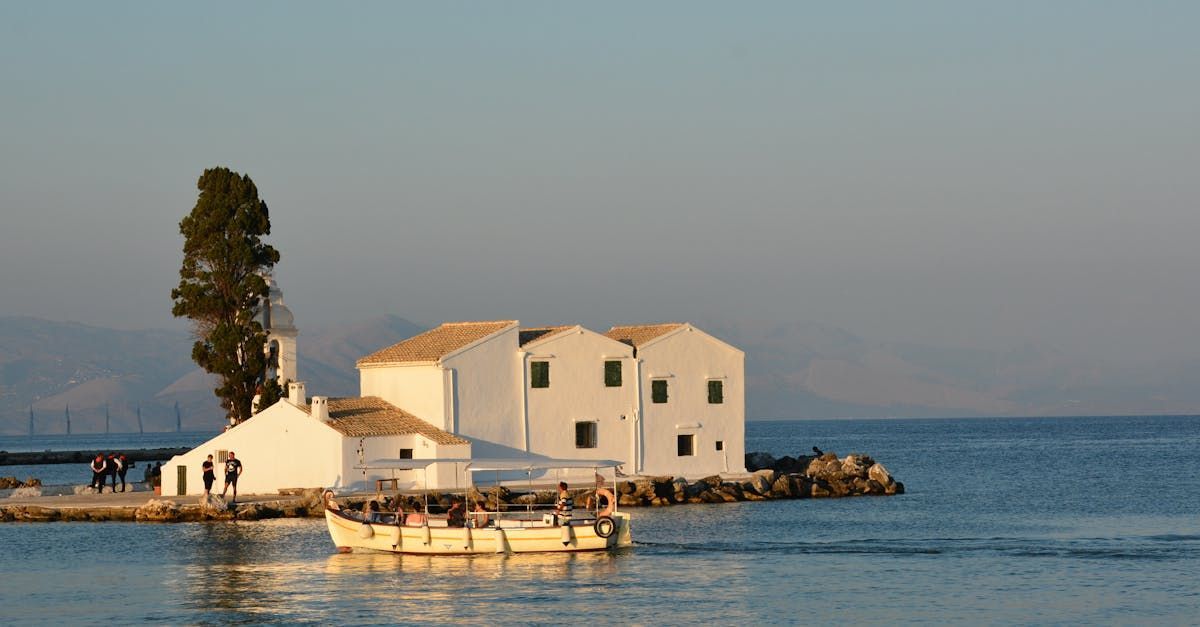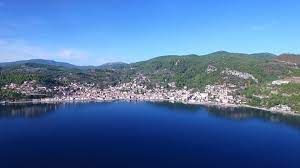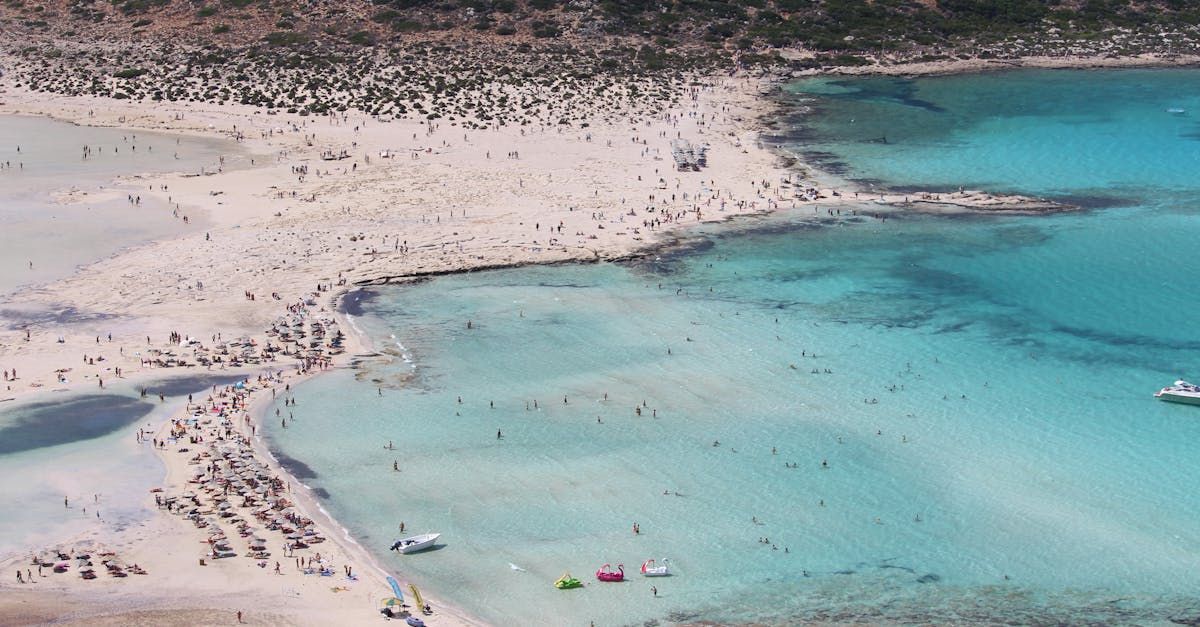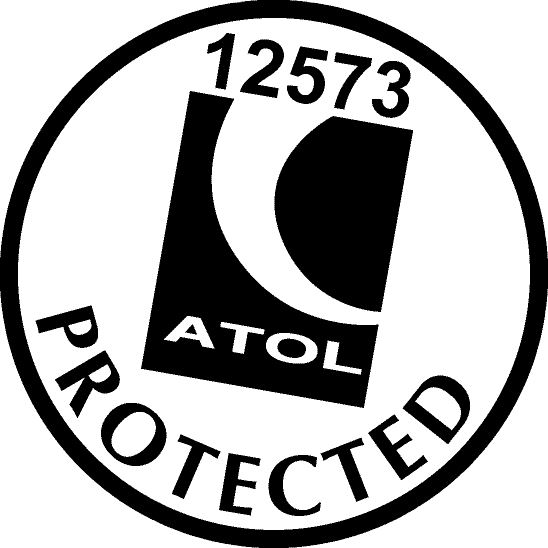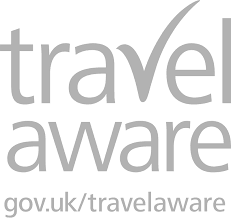February 25, 2024
What is the size and population of Crete? Crete, the largest of the Greek islands, has an area of approximately 8,336 square kilometers (3,219 square miles). It's a significant landmass in the Mediterranean region, known for its rich history, beautiful landscapes, and vibrant culture. The island has a population of around 630,000 How long are the flights from the UK to Crete? There are 2 main airports on Crete - Heraklion and Chania and the average flight time from the UK is 3 to 4 hours Which airlines fly direct from the UK to Crete? You can fly to Crete with British Airways, Easyjet, Ryanair, TUI Airways, Jet2, Sky express, Corendon, Wizz Air and Aegean Airways From which UK airports can you fly to Crete? Airports that operate direct flights to Crete from the UK are: Heathrow, Luton, Stansted,Gatwick, Manchester, Birmingham, Liverpool, Bristol, East Midlands, Newcastle, Exeter, Leeds Bradford, Bournemouth, Cardiff, Belfast, Glasgow, and Edinburgh Some of these only operate during the main summer season and on certains days of the week What are the best ways to travel around Crete? Rental Car : Renting a car is a popular choice for exploring Crete independently. It offers flexibility and the freedom to visit remote areas and scenic spots at your own pace. Major car rental companies operate at airports and in larger cities like Heraklion and Chania. Public Bus : Crete has an extensive bus network connecting major towns and tourist destinations. KTEL is the main bus operator on the island. While buses are relatively affordable, they may not always be the fastest or most convenient option, especially for reaching remote areas. Taxis: Taxis are available in cities and tourist areas. They can be convenient for shorter trips or traveling to destinations not served by public transportation. It's advisable to agree on the fare with the driver before starting the journey or ensure the meter is used. Scooter or Motorcycle Rental: Renting a scooter or motorcycle can be a fun way to explore Crete, particularly in coastal areas or small towns where traffic is lighter. However, it's essential to have experience riding these vehicles and to prioritize safety. Bicycle Rental: Some areas of Crete, especially coastal towns and cities, are bike-friendly, offering bike lanes and rental services. Cycling can be an enjoyable way to explore these areas while also staying active. Organized Tours: Joining organized tours or excursions is another option for exploring specific parts of Crete, such as guided hiking tours through the Samaria Gorge or cultural tours of archaeological sites. These tours typically include transportation and knowledgeable guides. How long do you need to have left on a UK passport when travelling to Crete and do you require any visas? Greece, including Crete, is a member of the European Union (EU) and part of the Schengen Area. Therefore, if you're a citizen of the United Kingdom, you can travel to Crete with a valid UK passport without needing a visa for short stays of up to 90 days within a 180-day period. Regarding passport validity, it's generally recommended to have at least six months of validity remaining on your passport beyond your intended date of departure from Crete. While Greek authorities may not enforce this requirement strictly for UK citizens, it's a good practice to ensure smooth entry and avoid any potential issues during your travels. However, passport and visa requirements can change, so it's always wise to check the most up-to-date information from official sources such as the UK government's Foreign, Commonwealth & Development Office (FCDO) or the Greek embassy or consulate before your trip. Are any vaccinations required for travelling to Crete? There are no specific vaccinations required for travelers visiting Crete. However, it's always a good idea to ensure that routine vaccinations, such as measles-mumps-rubella (MMR), diphtheria-tetanus-pertussis, varicella (chickenpox), polio, and influenza, are up to date before traveling anywhere. Depending on your travel plans and personal health history, you may also consider vaccinations or preventive measures against diseases like hepatitis A and B, typhoid, and rabies, especially if you plan to spend a lot of time outdoors or in rural areas where these diseases may be more prevalent. It's recommended to consult with your healthcare provider or a travel medicine specialist well in advance of your trip to discuss any specific health concerns and vaccination recommendations based on your individual circumstances. They can provide personalized advice tailored to your travel plans and medical history. Additionally, staying updated on travel health advisories from official sources like the World Health Organization (WHO) or the Centers for Disease Control and Prevention (CDC) can also be helpful. What is the currency in Crete and what are the best methods of payment? Crete, being part of Greece, uses the Euro (€) as its official currency. Therefore, the same methods of payment that apply in Greece generally apply in Crete as well. Here are some recommended methods of payment when traveling in Crete: Cash: Euros are widely accepted in Crete, especially for smaller purchases, at local markets, and in rural areas where card acceptance may be limited. It's advisable to carry some cash for convenience, particularly in more remote areas. Credit and Debit Cards: Major credit and debit cards, such as Visa and Mastercard, are widely accepted in Crete, especially in tourist areas, hotels, restaurants, and larger shops. Some businesses may also accept American Express and other major cards, but Visa and Mastercard are the most commonly used. Inform your bank of your travel plans to ensure seamless card usage abroad. Contactless Payment: Many businesses in Crete now support contactless payment methods, allowing you to pay for purchases quickly and securely using a contactless-enabled card or mobile payment options like Apple Pay or Google Pay. Travel Money Cards: Prepaid travel money cards loaded with Euros can be a convenient and secure option for managing your expenses while traveling in Crete. These cards work like debit cards and can be used for purchases and ATM withdrawals. They offer the advantage of budgeting and avoiding foreign transaction fees. ATMs: ATMs are widely available in Crete, particularly in larger cities and tourist areas. They allow you to withdraw cash in Euros using your debit or credit card. However, be mindful of ATM fees and currency conversion charges imposed by your bank. Currency Exchange: While it's possible to exchange foreign currency for Euros in Crete, it's generally more convenient and cost-effective to withdraw cash from ATMs using your debit card or use your credit card for purchases to take advantage of favorable exchange rates. Having a combination of cash and card options available ensures flexibility and convenience during your travels in Crete. What is the tipping policy in Crete? Tipping customs in Crete, as in the rest of Greece, are generally less formalized compared to some other countries, but leaving a tip for good service is appreciated. Here are some general guidelines for tipping in Crete: Restaurants and Cafés: In restaurants, it's customary to leave a tip, typically around 5-10% of the total bill, especially if you received good service. However, tipping is not obligatory, and if a service charge is already included in the bill, additional tipping may not be necessary. In smaller cafés or tavernas, rounding up the bill or leaving small change is common. Bars: Tipping in bars is not as common as in restaurants, but you may choose to leave small change or round up the bill as a gesture of appreciation for good service. Hotels: Tipping hotel staff, such as housekeepers or porters, is not obligatory but is appreciated if you received exceptional service. You can leave a small amount of money in your room for housekeeping or offer a tip directly to porters who assist with luggage. Taxi Drivers: While tipping taxi drivers is not mandatory, rounding up the fare to the nearest Euro or leaving a small tip is common practice, especially if the driver provided excellent service or assistance with luggage. Tour Guides and Drivers: If you participate in guided tours or hire a driver for excursions, tipping is appreciated for good service. The amount can vary depending on the length and quality of the tour, but around 5-10% of the tour cost is a common guideline. Other Services: For other services such as hairdressers, spa treatments, or tour operators, tipping is discretionary and based on the level of service provided. Overall, tipping in Crete is not mandatory but is a way to show appreciation for good service. While there are no strict rules, tipping around 5-10% is generally considered appropriate for restaurants and tour services, while smaller amounts or rounding up the bill may suffice in other situations. What is the weather like and when is the best time to visit Crete? The best time to visit Crete depends on your preferences and interests, as the island offers something special throughout the year. Here's a breakdown of the weather and what to expect during different seasons: Spring (March to May): Weather: Spring is a delightful time to visit Crete, with mild temperatures and blooming landscapes. Daytime temperatures range from 15°C to 25°C (59°F to 77°F), making it ideal for outdoor activities such as hiking and exploring archaeological sites. Highlights: Spring is the season of wildflowers and festivals, including Easter celebrations with traditional music, dance, and feasting. Summer (June to August): Weather: Summer is peak tourist season in Crete, with hot and sunny weather. Daytime temperatures often exceed 30°C (86°F) and can reach up to 35°C (95°F) or higher, especially in July and August. Sea temperatures are warm and perfect for swimming. Highlights: Summer is perfect for beach vacations, water sports, and outdoor activities. The island comes alive with festivals, cultural events, and nightlife. Autumn (September to November): Weather: Autumn in Crete is characterized by warm days and cooler nights. Temperatures gradually start to decrease, ranging from 20°C to 25°C (68°F to 77°F) in September to 15°C to 20°C (59°F to 68°F) in November. Rainfall increases towards the end of the season. Highlights: Autumn is a great time to visit for fewer crowds, pleasant weather, and wine harvesting season. It's an excellent time for hiking, exploring historical sites, and enjoying traditional Cretan cuisine. Winter (December to February): Weather: Winter in Crete is mild compared to northern Europe, with daytime temperatures averaging around 10°C to 15°C (50°F to 59°F). Nights can be cooler, especially in mountainous areas. Rainfall is more frequent, particularly in January and February. Highlights: Winter is the offseason in Crete, offering a peaceful atmosphere and opportunities to explore the island's cultural heritage, including museums, archaeological sites, and traditional villages. The island's snow-capped mountains also provide opportunities for skiing and winter sports. Overall, the best time to visit Crete depends on your preferences for weather, activities, and crowd levels. Summer is ideal for beach vacations and outdoor activities, while spring and autumn offer pleasant weather for exploring the island's natural beauty and cultural attractions. Winter is perfect for experiencing the island's authentic charm and avoiding the crowds. Which are the livliest resorts in Crete? Crete offers a variety of lively resorts known for their vibrant atmosphere, bustling nightlife, and abundance of entertainment options. Here are some of the liveliest resorts in Crete: Hersonissos: Located on the northern coast of Crete, Hersonissos is one of the island's liveliest and most popular resort areas. It boasts a vibrant nightlife scene with numerous bars, clubs, and beach parties. The main strip, known as "Limenas Hersonissou," is lined with restaurants, shops, and nightlife venues, attracting young travelers and partygoers. Malia: Another popular party destination on the northern coast, Malia is renowned for its lively atmosphere and vibrant nightlife. It's particularly popular among young travelers and clubbers, with an array of bars, clubs, and beach parties catering to a lively crowd. Agios Nikolaos: While not as rowdy as Hersonissos or Malia, Agios Nikolaos offers a vibrant nightlife scene with a mix of bars, clubs, and beachfront tavernas. The town's picturesque harbor area comes alive at night, with live music, cocktails, and entertainment options for visitors of all ages. Platanias : Situated west of Chania, Platanias is a lively resort area known for its bustling nightlife, beach bars, and entertainment options. The main street is lined with restaurants, shops, and music venues, attracting visitors looking for a fun and vibrant atmosphere. Rethymnon: With its charming Old Town and lively waterfront promenade, Rethymnon offers a vibrant nightlife scene with a mix of bars, clubs, and tavernas. Visitors can enjoy cocktails by the sea, live music, and cultural events in this bustling resort town. Agia Marina: Located near Chania, Agia Marina is a lively resort area known for its sandy beaches, water sports, and vibrant nightlife. The main street is lined with bars, restaurants, and beach clubs, offering entertainment options for visitors of all ages. These are just a few examples of the liveliest resorts in Crete, each offering a unique blend of entertainment, nightlife, and beach activities for travelers seeking a lively atmosphere during their vacation. Which are the quieter resorts in Crete? If you're looking for quieter, more relaxed resorts in Crete, there are several options away from the busiest tourist areas. Here are some quieter resorts and coastal villages in Crete: Paleochora: Located on the southwest coast of Crete, Paleochora is a tranquil coastal village known for its laid-back atmosphere, pristine beaches, and scenic surroundings. It's popular among travelers seeking a peaceful retreat away from the crowds. Agia Galini: Nestled on the southern coast of Crete, Agia Galini is a charming fishing village known for its picturesque harbor, narrow streets, and traditional tavernas. It offers a relaxed ambiance and beautiful views of the Libyan Sea. Sougia: Another tranquil village on the south coast of Crete, Sougia is renowned for its unspoiled beaches, crystal-clear waters, and rugged landscapes. It's an ideal destination for nature lovers and those seeking solitude. Loutro: Accessible only by boat or hiking trails, Loutro is a remote coastal village on the southwest coast of Crete. With no roads and limited development, Loutro offers a serene escape surrounded by stunning natural beauty. Agios Ioannis: Situated on the eastern coast of Crete, near the town of Ierapetra, Agios Ioannis is a peaceful resort area with a long sandy beach and clear waters. It's an excellent choice for travelers looking for tranquility and relaxation. Bali: Located on the north coast of Crete, between Heraklion and Rethymnon, Bali is a quieter resort destination known for its sheltered coves, calm waters, and scenic surroundings. It's popular among families and couples seeking a peaceful seaside retreat. These quieter resorts and coastal villages offer a more laid-back alternative to the bustling tourist areas of Crete, providing a peaceful environment to unwind and enjoy the natural beauty of the island. A re there any places to avoid in Crete? While Crete is generally a safe destination with welcoming locals and beautiful landscapes, like any travel destination, there may be areas or situations to approach with caution. Here are some considerations to keep in mind: Remote or Uninhabited Areas: Crete, like any island, has remote and uninhabited areas that may not be suitable for tourists, especially if you are unfamiliar with the terrain or traveling alone. It's advisable to stick to well-traveled paths and popular tourist areas. Nightlife Districts: While many of Crete's nightlife districts are safe and lively, it's always wise to be cautious, especially late at night and in areas known for heavy drinking or partying. Keep an eye on your belongings and avoid confrontations with strangers. Traffic and Driving: Crete's roads can be narrow, winding, and sometimes poorly maintained, particularly in rural areas. Exercise caution when driving, especially if you're not accustomed to Greek driving habits. Be aware of motorbikes and pedestrians, and adhere to speed limits. Tourist Scams: As with any tourist destination, there may be individuals looking to take advantage of visitors. Be cautious of scams such as overcharging for goods or services, fake tour operators, and pickpocketing in crowded areas. Use reputable tour operators and exercise common sense. Remote Beaches: While Crete's beaches are stunning, some remote or secluded beaches may lack lifeguards, amenities, or safety signage. Exercise caution when swimming in unfamiliar waters, especially if there are no warning signs about strong currents or hazardous conditions. Hiking Trails: Crete offers fantastic hiking opportunities, but some trails can be challenging, particularly in rugged terrain or mountainous areas. Ensure you have proper footwear, sufficient water, and a map or GPS device when exploring hiking trails, and consider the difficulty level before embarking on a hike. By staying vigilant, respecting local customs, and using common sense, you can enjoy a safe and memorable experience while exploring the beautiful island of Crete. Which properties are good for families in Crete? Crete offers a variety of family-friendly resorts with amenities and activities suitable for all ages. Here are some of the best family resorts in Crete: Creta Maris Beach Resort: Located near Hersonissos, Creta Maris Beach Resort is a large, all-inclusive resort with a private beach, multiple swimming pools, children's clubs, sports facilities, and entertainment programs for all ages. Grecotel Club Marine Palace & Suites: Situated in Panormo, this family-friendly resort features multiple swimming pools, waterslides, a kids' club, playgrounds, sports facilities, and evening entertainment. It offers a range of accommodations, including family suites and bungalows. Atlantica Caldera Beach Resort: Nestled on the beachfront in Platanias, this resort offers spacious family rooms, swimming pools, waterslides, a kids' club, playground, sports facilities, and evening entertainment. All-inclusive packages are available. Aldemar Knossos Royal: Located near Hersonissos, this beachfront resort offers family-friendly amenities such as swimming pools, waterslides, a kids' club, playgrounds, sports facilities, and entertainment programs. Family rooms and suites are available. Grecotel Meli Palace: Situated in Sissi, this resort offers a picturesque setting with landscaped gardens and a private beach. Family-friendly amenities include swimming pools, waterslides, a kids' club, playground, sports facilities, and evening entertainment. Blue Palace, a Luxury Collection Resort & Spa: Located in Elounda, this luxury resort offers family-friendly accommodations, including suites and villas with private pools. Family amenities include swimming pools, a kids' club, watersports, and excursions. Stella Palace Resort & Spa: Situated in Analipsis, this all-inclusive resort features swimming pools, waterslides, a kids' club, playground, sports facilities, and entertainment programs. Family rooms and suites are available. These are just a few examples of family-friendly resorts in Crete, each offering a range of amenities and activities to ensure an enjoyable stay for families traveling with children. It's recommended to check the specific offerings and facilities of each resort to find the one that best suits your family's needs and preferences. Are there any historical sites to visit in Crete? Crete is steeped in history and boasts numerous fascinating historical sites dating back thousands of years. Here are some must-visit historical sites in Crete: Knossos: Located near Heraklion, Knossos is one of the most important archaeological sites in Crete and the center of the ancient Minoan civilization. Explore the ruins of the Minoan palace complex, which was once the seat of King Minos and is associated with the legend of the Minotaur and the Labyrinth. Highlights include the Throne Room, the Grand Staircase, and the Queen's Megaron. Phaistos: Situated in southern Crete, Phaistos is another significant Minoan archaeological site. Explore the remains of the ancient palace and surrounding structures, which offer insights into Minoan architecture, art, and daily life. Gortyn: Located in central Crete, Gortyn was an ancient Greek and Roman city known for its legal code, which was inscribed on a stone wall and is one of the oldest and most complete surviving legal documents from antiquity. Explore the ruins of the ancient city, including the Roman Odeon, the Temple of Apollo, and the Praetorium. Arkadi Monastery: Situated near Rethymnon, Arkadi Monastery is a symbol of Cretan resistance against Ottoman rule. Visit the monastery complex, which includes a church, museum, and historic buildings, and learn about its role in the Cretan revolution of 1866. Agia Triada Monastery: Located near Chania, Agia Triada Monastery is an impressive Venetian-era monastery known for its beautiful architecture and historical significance. Explore the monastery complex, which includes churches, courtyards, and a museum showcasing religious artifacts and manuscripts. Ancient Aptera: Situated near Chania, Ancient Aptera is an archaeological site dating back to the Minoan and Hellenistic periods. Explore the remains of ancient city walls, temples, theaters, and Roman baths, as well as stunning views of the surrounding landscape and sea. Eleutherna Archaeological Museum: Located near Rethymnon, the Eleutherna Archaeological Museum showcases artifacts from the ancient city of Eleutherna, including pottery, sculptures, and inscriptions spanning several centuries. These are just a few examples of the many historical sites waiting to be explored in Crete. Whether you're interested in ancient civilizations, medieval monasteries, or Ottoman-era monuments, Crete offers a rich tapestry of history and culture to discover. Are there any archaelogical sites to visit in Crete? Here are some notable archaeological sites to visit in Crete: Gortyn: Gortyn was an ancient Greek and Roman city in central Crete, known for its legal code inscribed on a stone wall. The archaeological site of Gortyn includes remains of the city's Roman Odeon, the Temple of Apollo, the Praetorium, and the remnants of ancient city walls. Eleutherna: The ancient city of Eleutherna, located near Rethymnon, has been continuously inhabited from the Minoan period through the Byzantine era. Visitors can explore the archaeological site, which includes remains of city walls, houses, tombs, and a necropolis. Archanes: Archanes is a Minoan archaeological site near Heraklion, known for its well-preserved Minoan cemetery. The site includes chamber tombs, sarcophagi, and artifacts dating back to the Minoan period. Zakros: Zakros, located on the eastern coast of Crete, was an important Minoan settlement and port city. The archaeological site includes the ruins of a Minoan palace, as well as tombs and a harbor complex. Malia: Malia is home to an archaeological site that includes the ruins of a Minoan palace complex. Visitors can explore the remains of the palace, which features courtyards, storerooms, and ceremonial areas. These are just a few examples of the many archaeological sites waiting to be explored in Crete. Each site offers a unique glimpse into the island's rich history and the civilizations that once thrived there. What are the local dishes that can be found in Crete: Crete boasts a rich culinary tradition with a diverse array of delicious dishes showcasing fresh, local ingredients and traditional cooking methods. Here are some local Cretan dishes you should definitely try: Dakos: A traditional Cretan meze made with barley rusk, fresh tomatoes, olive oil, feta or mizithra cheese, olives, and herbs. It's often drizzled with olive oil and sprinkled with salt and oregano. Kalitsounia: Small, savory pies filled with a mixture of local cheeses, herbs, and sometimes spinach or other greens. Kalitsounia can be baked or fried and are a popular snack or appetizer in Crete. Sfakian Pies (Sfakianes Pites): A specialty of the Sfakia region in Crete, these are thin, crispy pancakes filled with local cheese (usually mizithra or graviera) and drizzled with honey. Stuffed Vegetables (Gemista): A dish made with hollowed-out vegetables such as tomatoes, peppers, or zucchini, filled with a mixture of rice, herbs, and sometimes ground meat. Gemista are typically baked until tender and served as a main course or side dish. Stuffed Grape Leaves (Dolmadakia): Grape leaves stuffed with a flavorful mixture of rice, herbs, and sometimes ground meat. Dolmadakia are often served cold as an appetizer or meze. Cretan Salad (Choriatiki): A simple but delicious salad made with fresh tomatoes, cucumbers, onions, green peppers, olives, and feta cheese, dressed with olive oil and sprinkled with oregano. Lamb with Greens (Hohlioi or Stifado): Slow-cooked lamb or goat meat served with a variety of wild greens, herbs, and spices. Stifado is a similar dish made with rabbit or beef, cooked in a rich tomato sauce with onions, garlic, and spices. Cretan Cheese (Graviera, Mizithra, Anthotyro): Crete produces a variety of delicious cheeses, including graviera (a hard cheese often used in cooking or as a table cheese), mizithra (a soft, fresh cheese similar to ricotta), and anthotyro (a mild, creamy cheese often served as a dessert with honey). Seafood: Being an island, Crete offers an abundance of fresh seafood, including octopus, squid, shrimp, and various fish species. Grilled or fried seafood dishes are popular in coastal areas. Raki: While not a dish, raki is a traditional Cretan spirit made from distilled grape pomace. It's often served as a digestif after meals and is an integral part of Cretan hospitality. These are just a few examples of the delicious dishes you can enjoy in Crete, each showcasing the island's rich culinary heritage and unique flavors. What annual events and festivals take place in Crete? Crete hosts a variety of annual events and festivals throughout the year, celebrating its rich cultural heritage, religious traditions, and local customs. Here are some of the most notable annual events in Crete: Easter Celebrations: Easter is one of the most significant religious holidays in Crete, celebrated with great fervor and tradition. Visitors can witness religious processions, church services, and festive gatherings in towns and villages across the island. The week leading up to Easter Sunday is filled with events, including the Good Friday procession and the Resurrection service on Holy Saturday. Rethymnon Carnival: The Rethymnon Carnival is one of the largest and most vibrant carnival celebrations in Crete, featuring colorful parades, masquerade balls, music, and dancing. The carnival kicks off in January and culminates with the Grand Parade on Shrove Sunday (the Sunday before Lent begins). Chania Wine Festival: Held annually in July or August, the Chania Wine Festival celebrates the island's rich winemaking tradition with wine tastings, cultural performances, traditional music, and culinary delights. Visitors can sample a variety of local wines and learn about Crete's wine culture. Heraklion Summer Festival: The Heraklion Summer Festival is a cultural extravaganza featuring music concerts, theater performances, dance shows, art exhibitions, and film screenings held at various venues across the city from June to September. The festival showcases both local talent and international artists. Assumption of Mary: On August 15th, the Feast of the Assumption of Mary is celebrated in towns and villages across Crete with religious processions, church services, and traditional feasts. It's one of the most important religious holidays in Greece and marks the end of the summer holiday season. International Piano Festival of Chania: Held annually in September, the International Piano Festival of Chania brings together world-class pianists and musicians for a series of concerts and recitals at historic venues in Chania. The festival attracts classical music enthusiasts from around the world. Cretan Diet Festival: Celebrating the island's culinary heritage and healthy Mediterranean diet, the Cretan Diet Festival takes place in various locations throughout Crete, featuring cooking demonstrations, tastings, workshops, and educational seminars on nutrition and wellness. These are just a few examples of the many annual events and festivals that take place in Crete, each offering a unique opportunity to experience the island's vibrant culture, traditions, and hospitality. Are there any major sporting events in Crete? While Crete may not host many major international sporting events, it does offer opportunities for various sports and outdoor activities throughout the year. Here are some notable sporting events and activities in Crete: Crete Marathon: The Crete Marathon is an annual running event held in Chania, usually in April. The marathon attracts runners from around the world to compete in the full marathon, half marathon, and 10K races. The scenic route takes participants through historic neighborhoods, coastal areas, and picturesque landscapes. Crete Half Marathon: Similar to the Crete Marathon, the Crete Half Marathon is a popular running event held in Heraklion, usually in September. Runners can choose to participate in the half marathon or 5K races, enjoying scenic views of the city and coastline along the route. Water Sports: With its crystal-clear waters and beautiful beaches, Crete offers a wide range of water sports activities, including swimming, snorkeling, scuba diving, windsurfing, kiteboarding, and sailing. Many coastal resorts and water sports centers provide equipment rental and instruction for visitors of all skill levels. Hiking and Trekking: Crete's diverse landscape, including mountains, gorges, and coastal trails, makes it an excellent destination for hiking and trekking enthusiasts. Popular hiking routes include the Samaria Gorge, the E4 European Long Distance Path, and the White Mountains (Lefka Ori). Guided hiking tours and self-guided trails are available throughout the island. Cycling and Mountain Biking: Crete offers numerous cycling routes and mountain biking trails, suitable for both leisurely rides and challenging off-road adventures. Cyclists can explore picturesque villages, olive groves, vineyards, and rugged terrain while enjoying breathtaking views of the countryside and coastline. Crete Basketball Tournament: Basketball is a popular sport in Crete, and the island hosts various local and regional tournaments throughout the year. Basketball enthusiasts can watch games featuring local teams and youth leagues at sports complexes and stadiums across Crete. Golf: While golf is not as widespread in Crete as in some other destinations, there are a few golf courses on the island, including the Crete Golf Club near Hersonissos. Golfers can enjoy playing a round amidst stunning scenery and panoramic views of the Aegean Sea. These are just a few examples of the sporting events and activities available in Crete, catering to a wide range of interests and skill levels. Whether you're a runner, water sports enthusiast, hiker, cyclist, or golfer, Crete offers plenty of opportunities to stay active and enjoy the outdoors. H ave any movies been filmed in Crete? Yes, several movies have been filmed in Crete due to its stunning landscapes, historic sites, and unique charm. Some notable films shot partially or entirely on the island of Crete include: Zorba the Greek (1964): Based on the novel by Nikos Kazantzakis, "Zorba the Greek" is perhaps the most famous film shot in Crete. Starring Anthony Quinn and Alan Bates, the movie tells the story of a young English writer who forms a bond with a free-spirited Greek man named Zorba. Many scenes were filmed in the village of Stavros on the Akrotiri Peninsula near Chania. The Guns of Navarone (1961): This epic war film, starring Gregory Peck, David Niven, and Anthony Quinn, was partly filmed on the island of Crete. The rugged terrain and dramatic coastline of Crete provided the backdrop for several scenes set in occupied Greece during World War II. Heavenly Creatures (1994): Directed by Peter Jackson, "Heavenly Creatures" is a psychological drama based on the true story of two teenage girls who form an obsessive friendship and commit a shocking crime. Some scenes were filmed in the village of Anogeia in the mountains of Crete. The Two Faces of January (2014): Based on the novel by Patricia Highsmith, "The Two Faces of January" is a thriller starring Viggo Mortensen, Kirsten Dunst, and Oscar Isaac. The film was partly shot in Chania and other locations in Crete, standing in for 1960s Greece. Alexis Zorbas (1952): Before "Zorba the Greek," there was "Alexis Zorbas," a film adaptation of Nikos Kazantzakis' novel "The Life and Times of Alexis Zorbas." The movie, directed by Michael Cacoyannis and starring Anthony Quinn, was shot in various locations in Crete, capturing the island's beauty and spirit. These are just a few examples of movies filmed in Crete, showcasing the island's diverse landscapes and serving as a backdrop for compelling stories on the big screen. Crete's natural beauty, rich history, and cultural heritage continue to attract filmmakers from around the world. What famous people came from Crete? Crete has been home to many notable individuals throughout history, spanning various fields such as literature, politics, art, and sports. Here are a few famous people associated with Crete: Nikos Kazantzakis (1883-1957): Nikos Kazantzakis was a renowned Greek writer and philosopher, best known for his novels "Zorba the Greek" and "The Last Temptation of Christ." Born in Heraklion, Crete, Kazantzakis' work explores themes of existentialism, spirituality, and the human condition. Eleftherios Venizelos (1864-1936): Eleftherios Venizelos was a prominent Greek statesman and politician, often considered one of the most important figures in modern Greek history. Born in Mournies, near Chania, Crete, Venizelos played a key role in Greek politics and diplomacy during the late 19th and early 20th centuries, serving multiple terms as Prime Minister of Greece. Nikos Xilouris (1936-1980): Nikos Xilouris, also known as "The Archangel of Crete," was a legendary Greek folk singer and songwriter. Born in Anogeia, a mountain village in Crete, Xilouris was known for his powerful voice and heartfelt performances, which helped popularize Cretan music and culture throughout Greece and beyond. El Greco (1541-1614): Domenikos Theotokopoulos, known as El Greco, was a Greek painter, sculptor, and architect of the Spanish Renaissance. While El Greco was born in Crete (then part of the Republic of Venice), he achieved fame as an artist in Spain, where he produced many of his most famous works, including "The Burial of the Count of Orgaz" and "View of Toledo." Odysseas Elytis (1911-1996): Odysseas Elytis was a Greek poet and winner of the Nobel Prize in Literature in 1979. Born in Heraklion, Crete, Elytis is considered one of the most important figures in modern Greek poetry, known for his lyrical style and thematic exploration of Greek history, culture, and mythology. Nana Mouskouri: Nana Mouskouri is a Greek singer, considered one of the best-selling music artists in the world. Born in Chania, Crete, Mouskouri has recorded over 1,500 songs in multiple languages and has sold over 300 million records worldwide. These are just a few examples of famous individuals associated with Crete, each contributing in their own way to the island's rich cultural heritage and global influence. What is the main language spoken in Crete? The main language spoken in Crete is Greek. Greek is the official language of Greece, including its islands like Crete. Most residents of Crete, particularly those in urban areas and tourist destinations, speak Greek as their primary language. However, due to the island's popularity as a tourist destination, especially in coastal areas, many people working in the tourism industry speak English and sometimes other languages such as German, French, or Russian to accommodate international visitors. In more remote or rural areas, proficiency in English may be less common, but basic communication can often still be achieved, especially in establishments frequented by tourists. Useful phrases to know when travelling to Crete When traveling to Crete, knowing a few basic Greek phrases can enhance your experience and make communication easier. Here are some useful phrases to know: Hello: Γεια σας (Yia sas) - Formal / Χαίρετε (Herete) - Informal Goodbye: Αντίο (Adio) Please: Παρακαλώ (Parakalo) Thank you: Ευχαριστώ (Efharisto) You're welcome: Παρακαλώ (Parakalo) or Παρακαλώ πολύ (Parakalo poli) Yes: Ναι (Ne) No: Όχι (Ochi) Excuse me / Sorry: Συγνώμη (Sygnomi) Do you speak English?: Μιλάτε αγγλικά; (Milate anglika?) I don't understand: Δεν καταλαβαίνω (Den katalaveno) How much is this?: Πόσο κάνει αυτό; (Poso kani afto?) Where is...?: Πού είναι...; (Pou ine...?) Can you help me?: Μπορείτε να με βοηθήσετε; (Borite na me voithisete?) I need...: Χρειάζομαι... (Hriazome...) I'm lost: Έχω χαθεί (Eho hathi) Cheers!: ΥΓΕΙΑ! (Yia mas!) Where is the bathroom?: Πού είναι η τουαλέτα; (Pou ine i tualeta?) Can I have the bill, please?: Μπορώ να έχω τον λογαριασμό, παρακαλώ; (Boro na eho ton logariasmo, parakalo?) Help!: Βοήθεια! (Voithia!) I love Crete: Αγαπώ την Κρήτη (Agapo tin Kriti) Learning these basic phrases can go a long way in making your travels in Crete more enjoyable and immersive. Locals appreciate when visitors make an effort to speak their language, even if it's just a few words.

